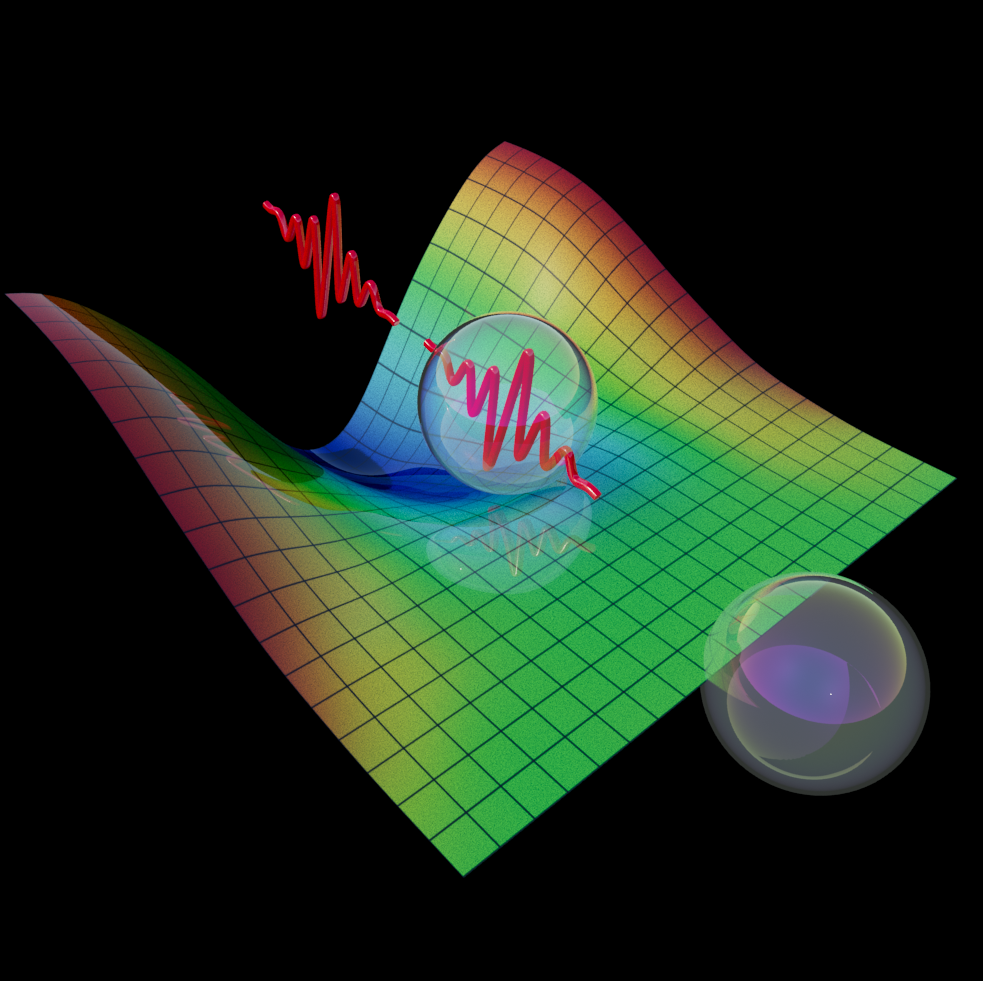Summary
This is a collection of four quantum mechanics lessons for high school physics. In the first lesson, students review the principle of superposition of waves and constructive and destructive interference with Slinkies. In the second lesson, students investigate the particle properties of waves by discharging electroscopes. In the third lesson, students learn about the surprising results of the double slit experiment showing that particles have wavelike behavior. In the fourth lesson, students investigate wave functions as orbitals in atoms and explain the spectral emission of hydrogen atoms.Resources

In this lesson, students first review the principle of superposition of waves and constructive and destructive interference with slinkies. Students then investigate diffraction and how different variables change the interference pattern in the double slit experiment using the Wave Interference Phet... Read more »
Quantum Mechanics Lesson 1: Wave Properties of Light
Quantum Mechanics
- 11th - 12th
- Science
- Physics
- HS-PS4, HS-PS4-1, HS-PS4-3

Students investigate the particle properties of waves by discharging electroscopes and take notes using the Cornell Note System. The teacher performs a demonstration of discharging an electroscope with light. The students investigate the photoelectric effect using a simulation. Then using the Cornell... Read more »
Quantum Mechanics Lesson 2: Particle Properties of Light
The Photoelectric Effect
- National Science Foundation (NSF)
- 11th - 12th
- Science
- Physics
- 3-PS2-3, HS-PS4-1, HS-PS4-3, PS.PS3.3

In this lesson, students learn about the surprising results of the double slit experiment showing that particles have wavelike behavior through watching a Dr. Quantum video and through the PhET Quantum Wave Interference simulation. Students are split into groups to watch curated videos and create slideshow... Read more »
Quantum Mechanics Lesson 3: It is a Platypus, not a Duck or a Beaver
Quantum Mechanics
- 11th - 12th
- Science
- Physics
- HS-PS4-1, HS-PS4-3

In this lesson, students observe standing waves in strings, rods, pipes, and hoops through videos and teacher demonstrations. Students investigate the ‘particle in a box’ problem using a PhET simulation, which presents the electron as a wave with discrete wavelengths. Students investigate wave functions... Read more »
Quantum Mechanics Lesson 4: Wave Properties of Particles
Wave Properties of Particles
- National Science Foundation (NSF)
- 12th Grade
- Science
- Physics
- 3-PS2-3, HS-PS4-1, HS-PS4-3, PS.PS3.3
Standards
This work is licensed under a Creative Commons CC BY-SA 4.0 License.
Report copyright infringement »

